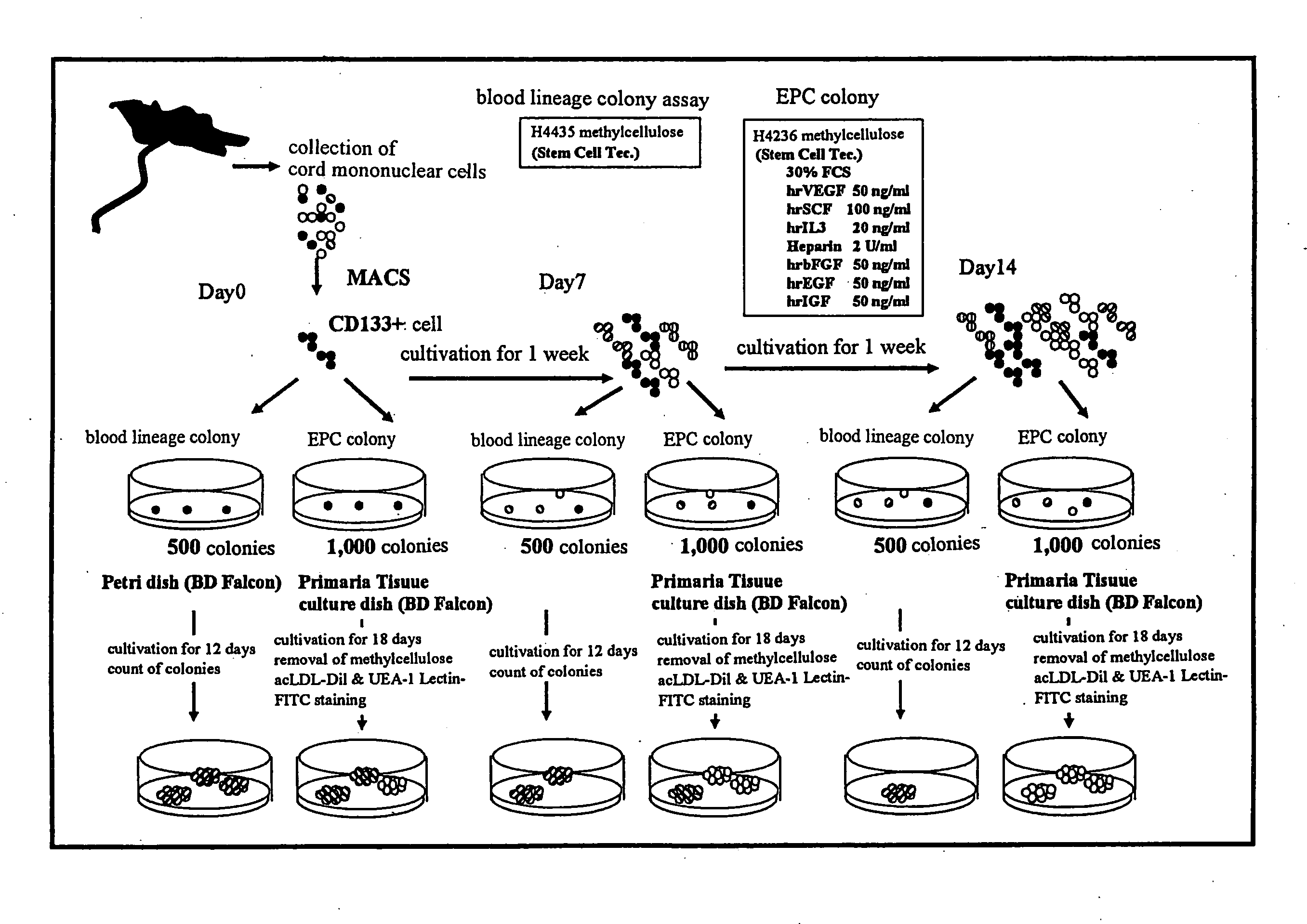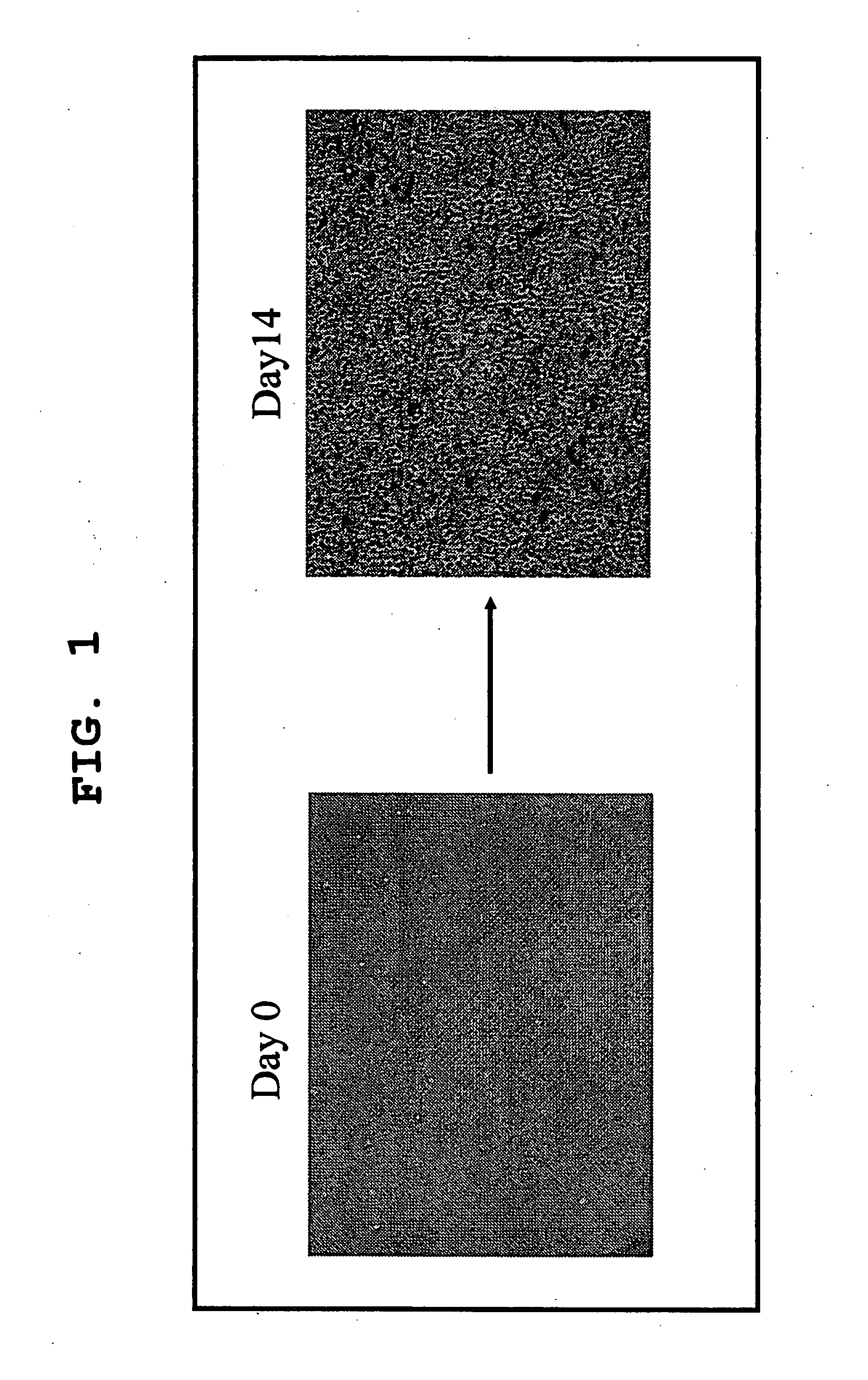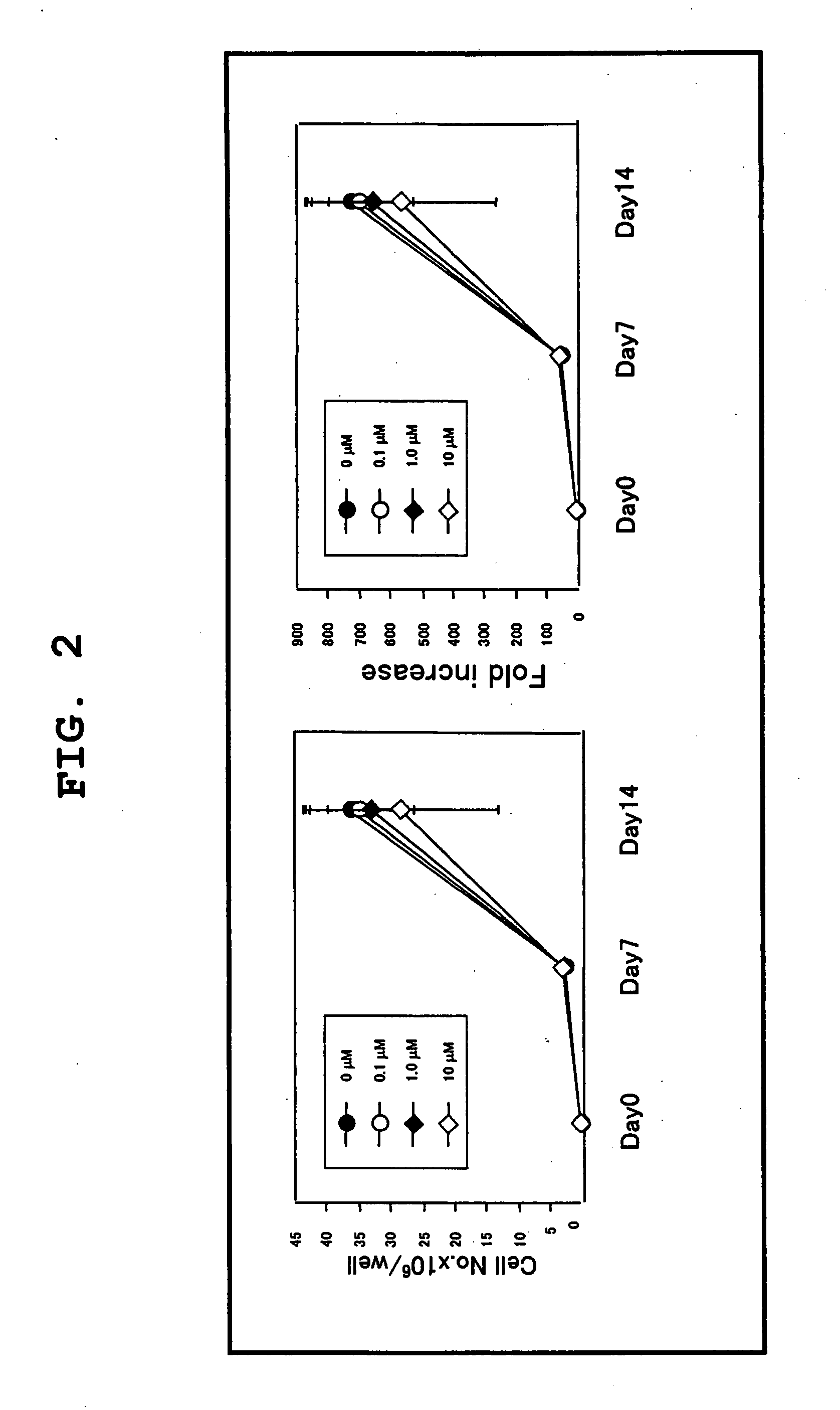Method for Amplification of Endothelial Progenitor Cell in Vitro
a technology amplification methods, which is applied in the field of amplification of endothelial progenitor cells in vitro, can solve the problems of difficult repetitive transplantation therapy, difficult to obtain sufficient therapeutic effect, and physical burden on patients, and achieve the effect of examining the effectiveness of the techniqu
- Summary
- Abstract
- Description
- Claims
- Application Information
AI Technical Summary
Benefits of technology
Problems solved by technology
Method used
Image
Examples
example 1
Expansion from Cord Blood CD133 Positive Cell
(1) Preparation of Serum-Free Culture Medium of the Present Invention
[0050]The serum-free culture medium of the present invention was produced according to the composition shown in Table 1 and using a serum-free culture medium (STEMSPAN, Stem Cell Tec.). To be specific, each of the ingredients shown in Table 1 was aseptically added to a serum-free culture medium to a given concentration.
TABLE 1componentprovided byconcentrationhrVEGFPeprotec50 ng / mLhrSCFKirin Brewery100 ng / mL hrlL-6Kirin Brewery20 ng / mLhrFlt-3Peprotec100 ng / mL hrTPOKirin Brewery20 ng / mL
[0051]In Table 1, “h” shows human derivation. “r” shows a recombinant. Other abbreviations are as mentioned above.
[0052]Serum-free culture media were produced by further adding a TGF-β inhibitor to the above-mentioned serum-free culture medium to a concentration of 0 μM, 0.1 μM, 1 μM and 10 μM, respectively. SB-431542 (TGFβ1-type receptor kinase activity inhibitor) provided by Kirin Brewery ...
example 2
In Vitro Differentiation and Expansion of Cord Blood CD133 Positive Cell-Derived EPC and Evaluation thereof
[0057]Using the serum-free culture media of the present invention containing various concentrations of TGF-β inhibitor as prepared in Example 1, cord blood CD133 positive cell-derived EPC was expanded in vitro and differentiated. The degree of expansion was evaluated by counting the number of colonies, and the degree of differentiation was evaluated by separately counting the number of colonies of blood lineage cell and that of EPC. For EPC colony, moreover, large cell colonies and small cell colonies were separately counted, as well as the total number of EPC colonies was counted. The specific procedures are shown in FIG. 3.
[0058]The cord blood-derived mononuclear cells were collected and cultivated in a serum-free culture medium in the same manner as in Example 1. Using the cells at the time points of the start of cultivation, after 1 week of cultivation and after an addition...
example 3
Examination of Effectiveness for Cell Transplantation Therapy
[0070]CD133 positive cell free of expansion and differentiation induction, and EPC cell expansion and differentiation induced by the method of the present invention were each used for cell transplantation therapy of ischemic cardiac diseases, and the effectiveness thereof was examined. The effectiveness was examined by determining the contractile function and diastolic function.
(1) Cell Transplantation Using CD133 Positive Cell Free of Expansion and Differentiation Induction
[0071]By the same procedures as in Example 1 (2), CD133 positive cells were collected. Then, an ischemic myocardium model rat was prepared. In detail, under Nembutal anesthesia, a nude rat was subjected to the 3rd or 4th left posterior intercostal thoracotomy, and the epicardium was detached. Subsequently, the region just below left atrial appendage of left anterior descending coronary artery of the exposed heart was ligated, and the resulting nude rat ...
PUM
| Property | Measurement | Unit |
|---|---|---|
| Concentration | aaaaa | aaaaa |
| Concentration | aaaaa | aaaaa |
| Concentration | aaaaa | aaaaa |
Abstract
Description
Claims
Application Information
 Login to View More
Login to View More - R&D
- Intellectual Property
- Life Sciences
- Materials
- Tech Scout
- Unparalleled Data Quality
- Higher Quality Content
- 60% Fewer Hallucinations
Browse by: Latest US Patents, China's latest patents, Technical Efficacy Thesaurus, Application Domain, Technology Topic, Popular Technical Reports.
© 2025 PatSnap. All rights reserved.Legal|Privacy policy|Modern Slavery Act Transparency Statement|Sitemap|About US| Contact US: help@patsnap.com



